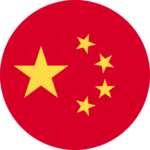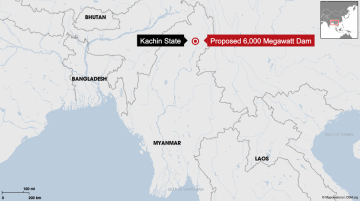
The Central African Republic (CAR)’s first photovoltaic power plant is now operational following the successful launch of operation of the Sakaï Solar Power Plant last week.
In the CAR, power cuts sometimes last 16 hours a day, badly hitting the country’s economic growth. The 15 MW installation was built by state-owned China Energy’s subsidiary, Energy China Tianjin Electric Power Construction Co., Ltd. should make it easier for the CAR to deal with its electricity supply problems.
The World Bank notes that a measly 14.3% of CAR’s five million people have electricity access with the capital Bangui having the highest access rate at an estimated 35% while only 0.4% of rural Central Africans have access. CAR’s energy access problems are not only limited to electricity but also to non-solid fuels.
In the broader sense, renewable energies are limited by factors including inadequate legal and institutional framework. The CAR also has insufficient internal capacity and lack of financing, among other challenges.
To address the electricity access problems, the CAR came up with the 2015-2030 Investment Project under which several dams will be constructed to help with electricity generation. The dams include Dimoli hydroelectric scheme (180 MW), Lobaye hydroelectric scheme (75 MW), Kotto hydroelectric scheme (40 MW), Lancrenon hydroelectric scheme (20 MW) which is on the border with Cameroon. The plan will also see the rehabilitation of the Boali II hydroelectric plant (10 MW to 15 MW). In total, these projects are estimated to cost an estimated $3.7bn in total.
The deal for the rehabilitation of the Boali II hydroelectric plant was signed between CAR authorities and the China Gezhouaba Group Company (CGGC) in Beijing during the China-Africa Forum Summit in September 2018.
There has been a slight increase in the shift to clean and renewable energy in the CAR but fossil fuels remain the biggest source of energy for the Central Africans. With the energy demand growth, the country has to provide solutions that increase not only energy access but also improve reliability.
Climate Change and Energy Generation in the CAR
Energy generation and access are critical for CAR’s development. According to the World Bank, constraints like limited generation, high cost, low access to modern services, irregular supply and high cost of energy investments hinder growth.
The CAR is heavily reliant on biomass including wood fuel, charcoal, and agricultural waste. With fuelwood being the dominant source of energy for cooking, it threatens the environment and the country’s efforts to meet its greenhouse gas emission cuts by 2030. Irregular rainfall patterns which result in droughts and flooding are also a threat to power generation in the country.
WHY IS THIS IMPORTANT? The CAR urgently needs to provide clean energy access for its population and renewable sources including the dam projects offer several opportunities to investors.
Chinese companies have successfully managed to bag multi-billion dollar projects across Africa and could be the front runners in the CAR’s energy development projects. Countries like Kenya, which embraced Chinese contractors in the last 2 decades are now moving to curtail Chinese monopoly in infrastructure development. If the CAR goes Kenya’s way, the country could see many of its infrastructure projects undertaken by Chinese companies.
SUGGESTED READING:
- Business Daily: Bill blocks Chinese contractors from projects below Sh20bn by Edwin Mutai
- Seetao: Central African Republic: Sakai PV plant is a gift from China












